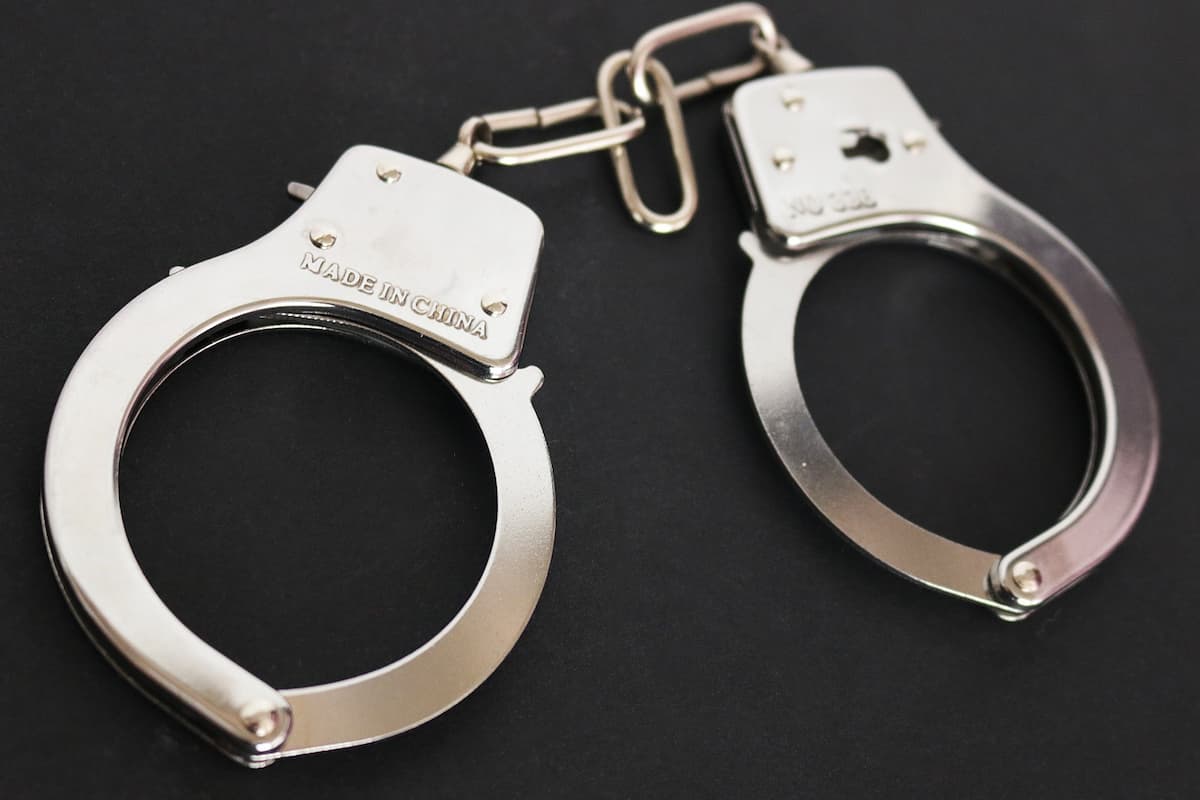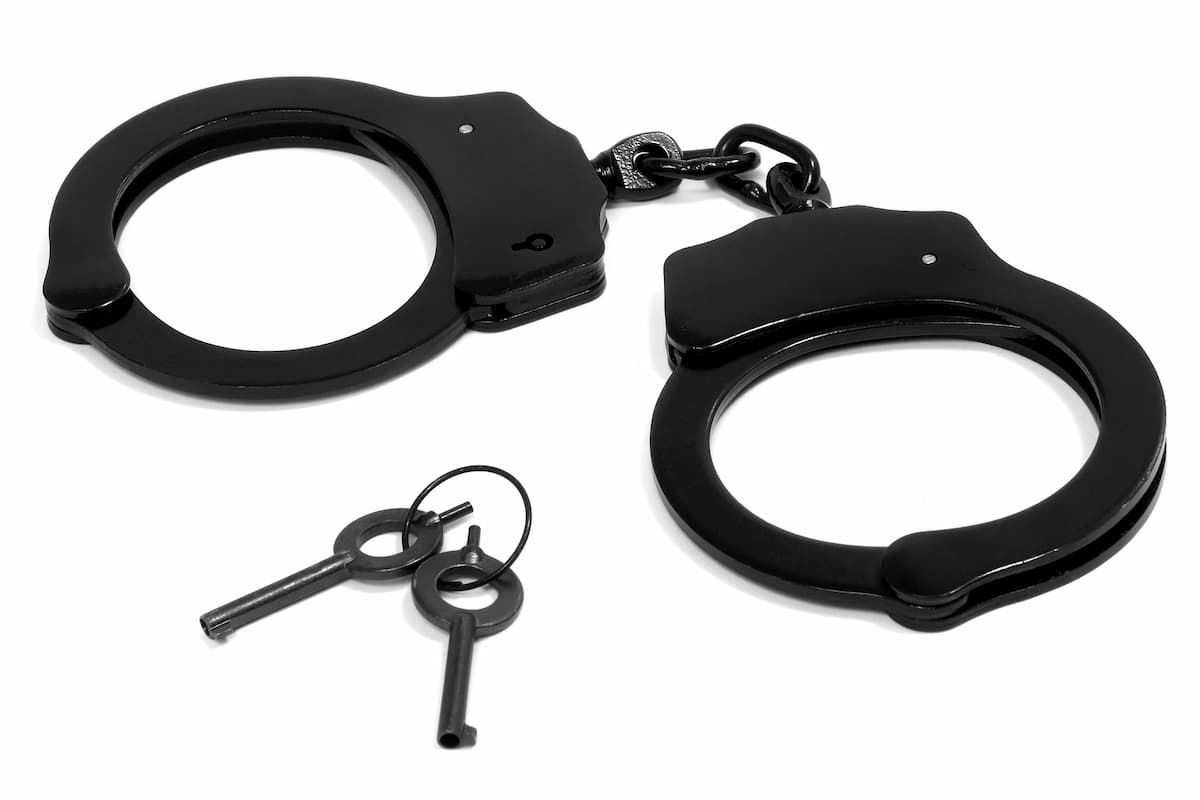Can You Bring Handcuffs On A Plane? (TSA Dos and Don’ts)
People own handcuffs for a number of reasons – as part of their work equipment, as costume accessories, or as a way to spice things up.
Traveling with handcuffs is more common than you think, and airlines, security personnel, and destination countries all have rules about whether they’re allowed.
Handcuffs are permitted in carry-on or checked luggage on flights leaving the United States; however, other countries may have different rules. When bringing handcuffs in carry-on luggage, security personnel have the final say as to whether they’re allowed through. Handcuffs can be considered a weapon, so it might be best to pack them in checked bags.
This article explains how to travel with handcuffs on a plane, including how to pack them, what makes them suspicious, and the best way to get them to your destination.
Can You Pack Handcuffs in Carry-On Bags?

According to the TSA, most US flights allow handcuffs in carry-on luggage.
Handcuffs can be made of metal but must not resemble a weapon; otherwise, they may be confiscated at security checkpoints.
As with all things, airport security reserves the right to remove any items from carry-on bags considered dangerous or can be used as a weapon.
Most US airlines follow TSA regulations; however, some may have additional restrictions on certain items, including handcuffs.
It’s always a good idea to check with the airline beforehand and see if they allow handcuffs in carry-on luggage.
This information is usually available on the airline’s website, social media, FAQs, or customer service portals.
Just keep in mind that when flying with handcuffs, they will be seen when your bag is x-rayed and may cause your hand luggage to be flagged for inspection.
Be prepared to answer questions about why you have handcuffs in your carry-on.
How to Pack Handcuffs in Carry-On Bags
Handcuffs packed in carry-on luggage should be easily accessible in case the baggage gets flagged by security and requires a physical inspection.
What Types of Handcuffs Are Considered Dangerous?
Although most standard handcuffs are safe for air travel, a few physical qualities could make some dangerous.
Passengers should avoid traveling with vintage handcuffs made of iron, handcuffs with long chains, and handcuffs that split into multiple parts.
Vintage iron handcuffs are heavy and could be considered similar to brass knuckles.
Metal handcuffs with long chains are a potential hazard because they could be used to choke someone or hurt them when spun with considerable force.
Lastly, metal handcuffs that split into multiple parts might look a bit obscure under x-ray, leading to a bag search.
Security agents could also decide that some parts of handcuffs are potential weapons if they are sharp or pointy.
Are Toy Handcuffs Allowed on Planes?
Plastic toy handcuffs are allowed on most planes without restrictions.
However, travelers should remember that the TSA does not allow realistic toy guns on any aircraft.
If the toy handcuffs come with a toy gun, leave the fake firearm at home.
Can You Pack Handcuffs in Checked Luggage?
The TSA permits travelers to pack handcuffs in their checked luggage.
Since standard metal handcuffs only weigh about 9 oz (0.2 kg), they shouldn’t take up much space in your bag (unless you’re packing them in bulk!)
How to Pack Handcuffs in Checked Luggage
Since checked luggage can be inspected by security, it’s a good idea to pack handcuffs where they’re easily accessible.
That way, if the handcuffs are seen as suspicious, officers won’t have to dig to the bottom of the bag, disturbing other items in the process.
Travelers concerned about their handcuffs getting caught on their clothes can wrap them in a cloth or towel or put them in a small bag.
If the handcuffs lock, passengers should also remember to pack the key — a small but crucial detail!
International Policies on Handcuffs
When leaving the United States, travelers must confirm that their airline and destination country allow handcuffs.
Some international airlines and foreign governments have different policies on what can and cannot come aboard or how these items should be packed.
In some cases, handcuffs may need to be packed in checked luggage or may be banned altogether.
What’s the Best Way to Travel With Handcuffs?

The best way to travel with handcuffs is to put them in checked luggage.
The rules for checked baggage aren’t as restrictive as those for carry-ons.
Checking items that may raise suspicions can save time at security and help travelers avoid answering invasive questions.
Should You Bring Handcuffs on a Plane?
Whether you should or shouldn’t bring handcuffs on a plane is subjective.
Handcuffs might be essential for traveling law enforcement officials or collectors bringing them to events.
Otherwise, a good rule of thumb is to avoid packing anything that can make traveling more difficult – especially in your carry-on luggage.
Ultimately, travelers should use their best judgment when packing handcuffs and remember that anything in carry-on bags may be confiscated by security at their discretion.
Conclusion
Handcuffs are allowed in both carry-on and checked luggage on most flights.
However, before packing anything, it’s always best to check with the airline and customs regulations at your final destination to ensure there are no restrictions on specific items.
When bringing handcuffs through security in carry-on bags, any sharp-edged, long-chained, or particularly heavy variations could be seen as potential hazards.
Security agents will have the final say on whether your handcuffs are permitted and may confiscate any items they deem potentially dangerous.
The best (and most discreet) way to travel with handcuffs is to pack them in checked luggage.